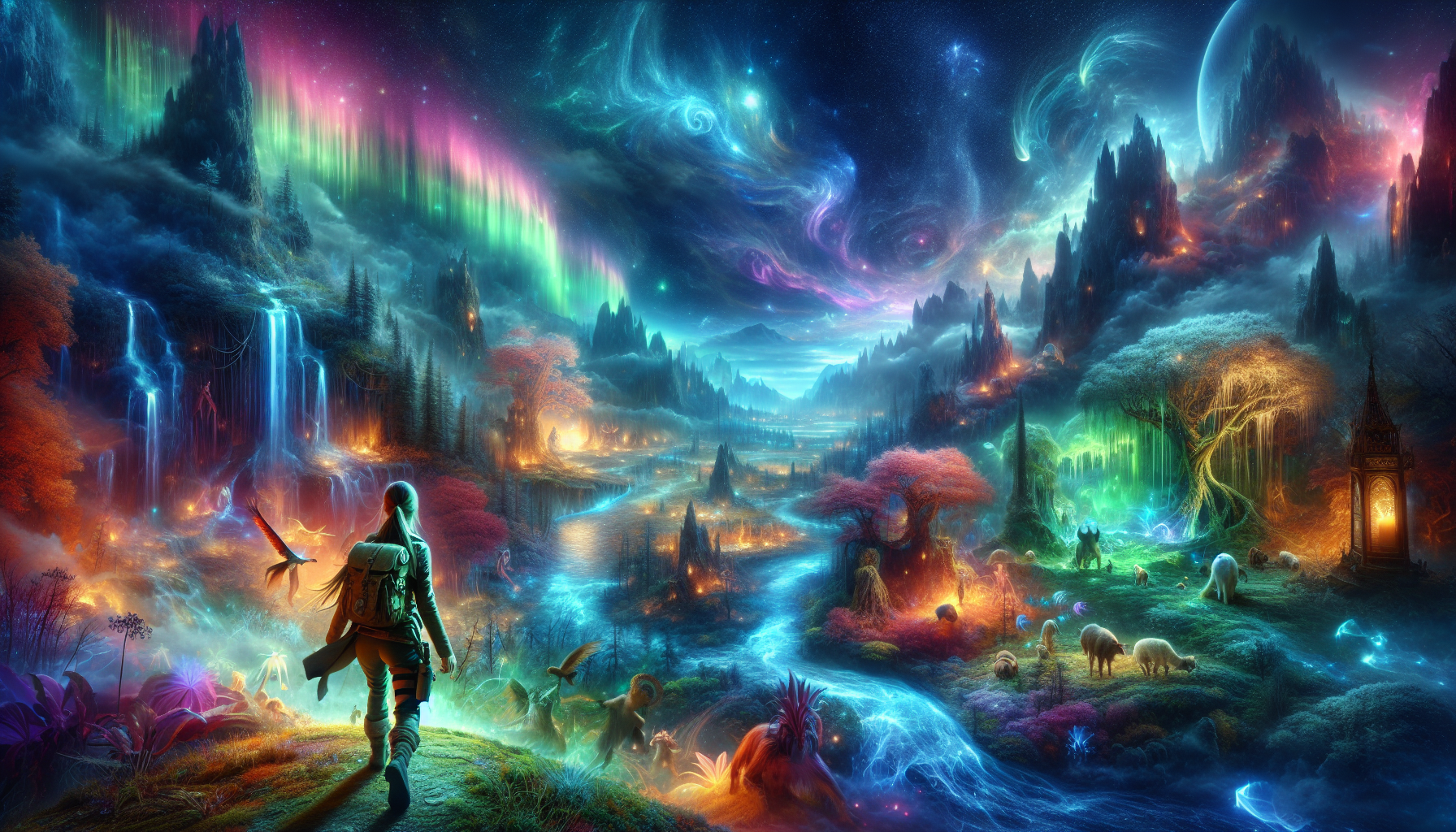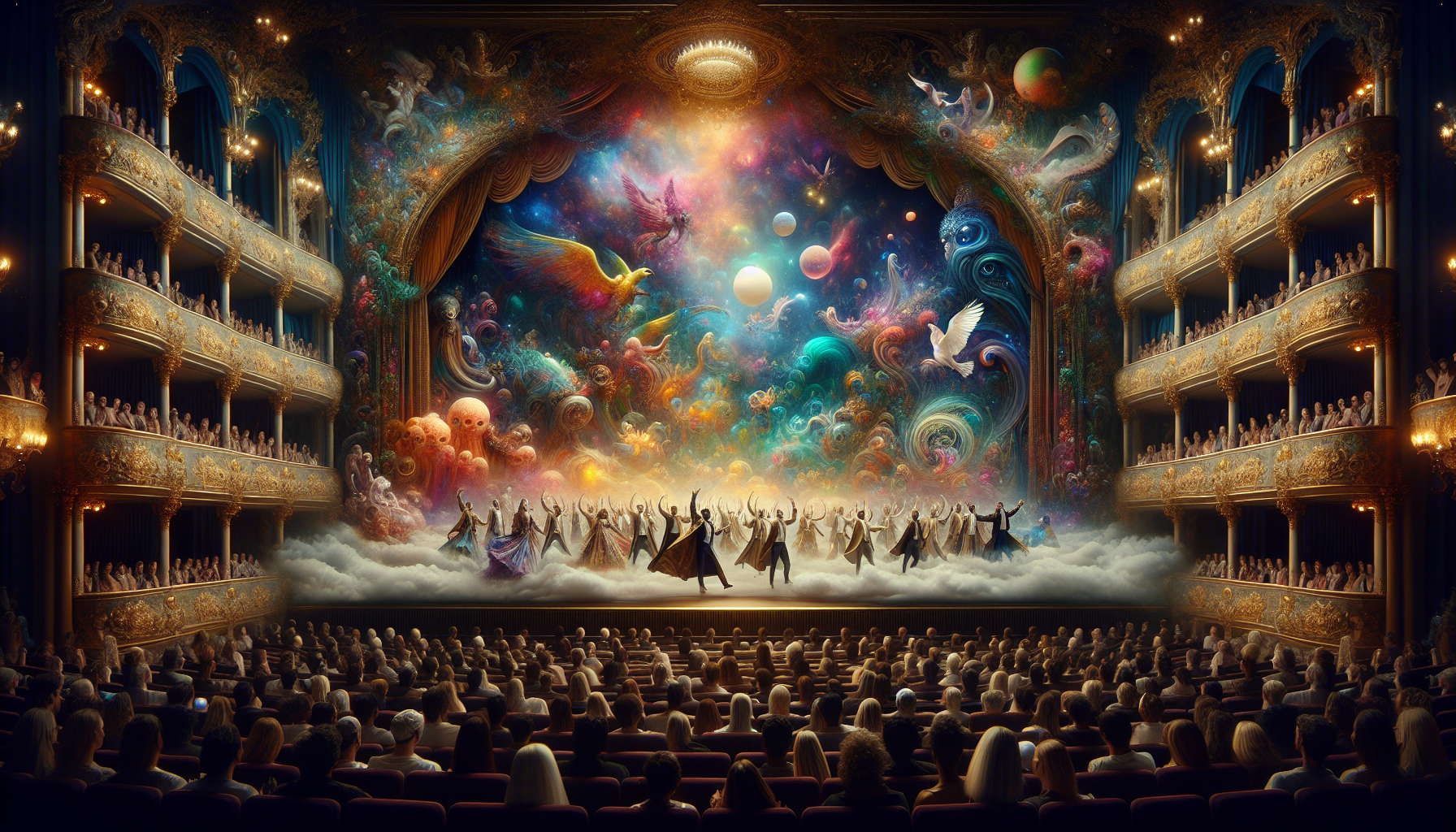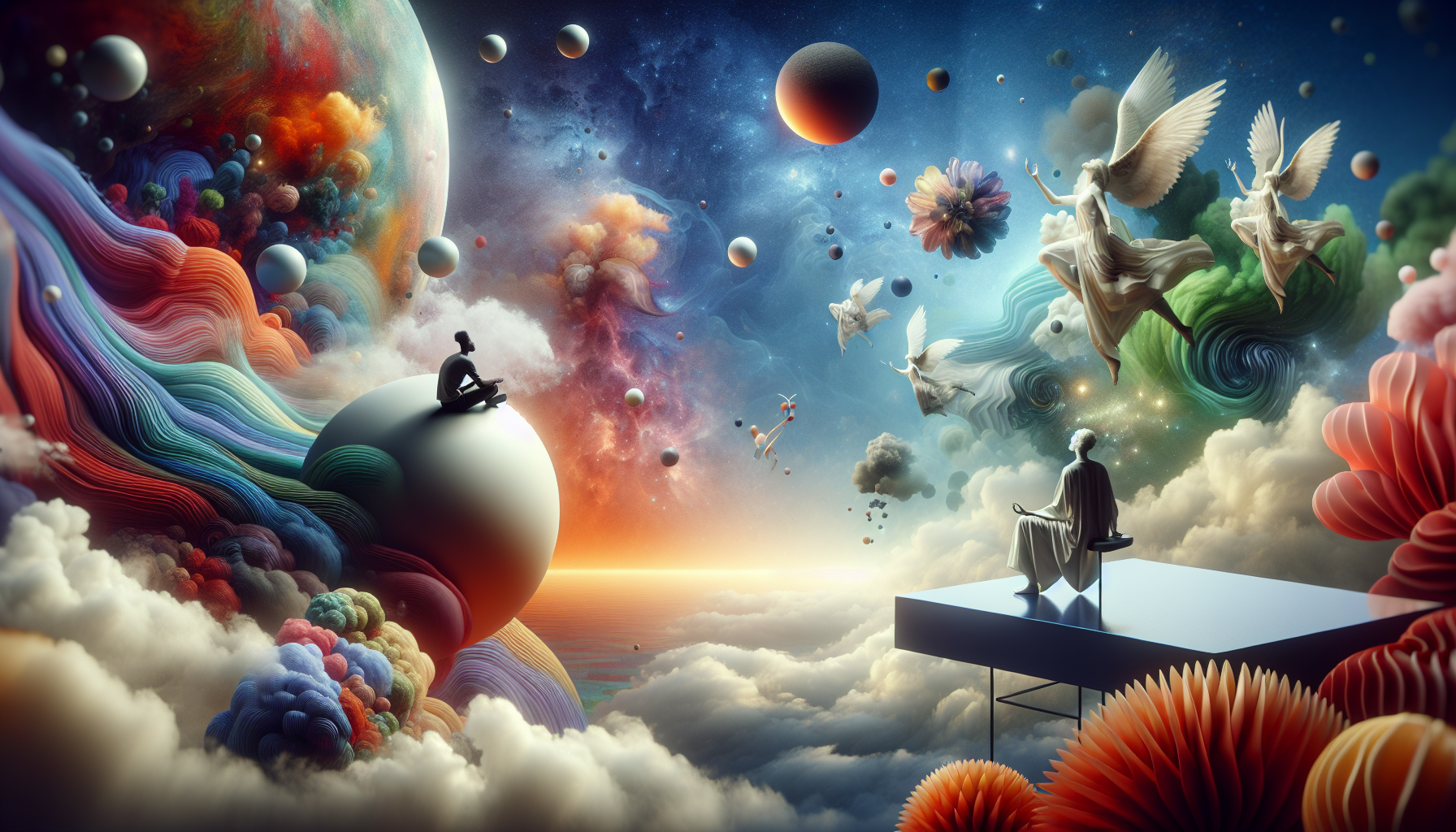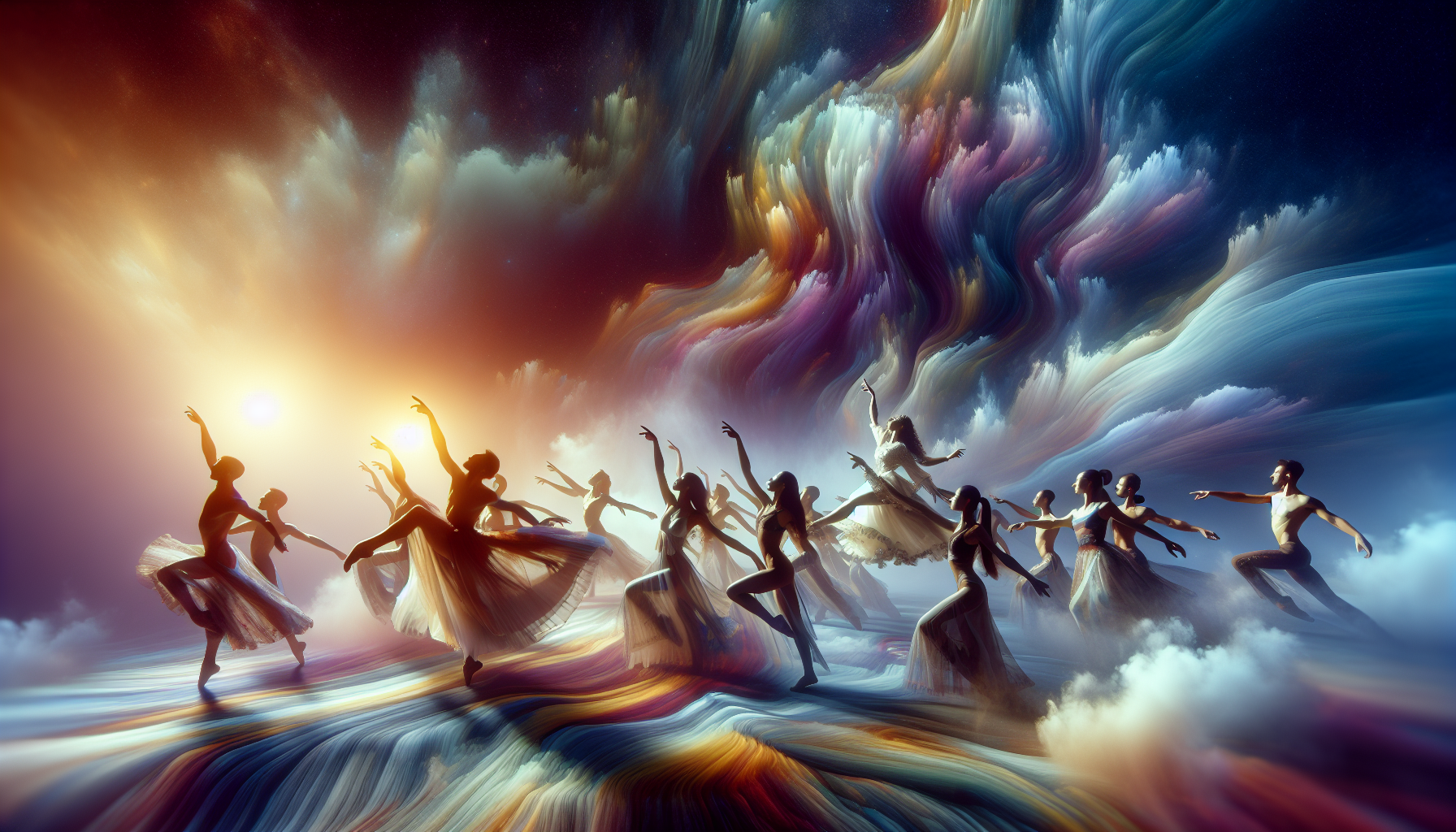In the hushed whispers of twilight, as the world drifts into the ethereal realm of dreams, there exists a peculiar phenomenon that has intrigued humanity for centuries: shared dreams. These are not mere echoes of one’s subconscious mind but rather dreams that seem to transcend individual boundaries, connecting two or more dreamers in a mysterious and perplexing tapestry of shared experiences. The phenomenon of shared dreams raises questions that tap into the deepest curiosities of the human psyche: Are these occurrences mere coincidences, or do they suggest a more profound connection between us? Could there be an underlying mechanism that links our dreams, hinting at a universal consciousness or a hidden dimension of human connectivity? In this article, we delve into the enigma of shared dreams, seeking to unravel their mysteries and explore the captivating possibilities they present. 🌌
Dreams have long been a subject of fascination and study, with interpretations and beliefs varying across cultures and epochs. From the ancient Egyptians, who viewed dreams as divine messages, to the psychoanalytic theories of Sigmund Freud and Carl Jung, dreams have been considered windows into the subconscious mind. However, the notion of shared dreams adds an intriguing twist to our understanding. How can two or more people, often miles apart, share the same dream narrative? Is there a scientific explanation, or do we venture into the realms of the mystical and the metaphysical to find answers? This exploration begins with anecdotal evidence and documented cases that suggest shared dreams are more than mere flights of fancy. We will examine stories from individuals who have experienced these connections firsthand, setting the stage for a deeper investigation into this curious occurrence.
As we embark on this journey, it is essential to consider the psychological and neurological aspects that may underlie shared dreams. Could there be a scientific basis for these experiences? We will explore the theories that attempt to explain shared dreaming through the lens of neuroscience and psychology. Some researchers posit that shared dreams may result from the synchronization of brainwaves or similar environmental cues that influence dream content. Others suggest that these dreams could arise from a deep psychological bond between individuals, such as family members or close friends, where emotional connections transcend physical boundaries. By examining these scientific perspectives, we aim to discern the plausibility of shared dreams from a grounded, empirical standpoint.
Beyond the scientific exploration, shared dreams beckon us to ponder the possibilities that lie beyond the tangible and the known. Are these dreams a glimpse into a collective consciousness, a shared psychic space where minds converge in the dreamscape? This notion aligns with Jung’s theory of the collective unconscious, where archetypes and symbols are shared among all humans, hinting at an intrinsic interconnectedness. Furthermore, we delve into cultural and spiritual interpretations, where shared dreams are often seen as omens or messages from other realms. Could these experiences be communications from the universe, guiding us in ways beyond our comprehension? As we navigate through these philosophical and spiritual landscapes, the potential implications of shared dreams invite us to reconsider the boundaries of human experience and connection.
Finally, the phenomenon of shared dreams challenges us to reflect on our understanding of reality and the nature of consciousness. If shared dreams are more than mere coincidences, what do they reveal about the fabric of reality? Could they suggest the existence of parallel worlds, where dreamers interact on a different plane? Or do they point towards an untapped potential within the human mind, urging us to explore the depths of our consciousness? In this article, we aim to synthesize the various strands of thought—from scientific inquiry to spiritual musings—and present a comprehensive exploration of shared dreams. By unraveling the mystery of this phenomenon, we hope to inspire curiosity and wonder, inviting readers to dream a little deeper and connect with the mysteries that lie within and beyond. 🌠
The Enigmatic Phenomenon of Shared Dreams
Dreams have long fascinated humanity, serving as a window into our subconscious minds and potentially offering insights into our emotions, fears, and desires. However, one of the most intriguing phenomena associated with dreaming is the occurrence of shared dreams—where two or more individuals report having the same or remarkably similar dream. While skeptics may argue that these are merely coincidences, others suggest they may point to deeper connections between individuals, possibly hinting at collective consciousness or even telepathic communication.
The idea of shared dreams challenges our understanding of reality and perception. It raises questions about the nature of our minds and the potential for interconnectedness beyond what is currently understood by science. This topic not only captures the imagination but also invites us to explore the boundaries of psychology, neuroscience, and even metaphysics.
In this article, we will delve into the various dimensions of shared dreams, examining potential explanations, historical accounts, and recent research findings. We will also explore cultural interpretations and consider what these phenomena might suggest about the human experience. By engaging with this mysterious topic, we aim to shed light on the possibilities that shared dreams present. 🌌
Historical Accounts and Cultural Perspectives
Throughout history, shared dreams have been documented in various cultures, often regarded with spiritual or mystical significance. In ancient times, dreams were frequently viewed as messages from the gods or the universe, and shared dreams were considered particularly meaningful. The Greeks, for example, believed in oneiroi—spirits that conveyed messages through dreams, and shared dreams were interpreted as divine communication.
In many indigenous cultures, dreams and shared dreams hold a significant place in the communal life of the tribe. They are often seen as a means of connecting with ancestors or receiving guidance on communal matters. For example, the Aboriginal peoples of Australia have a concept known as “Dreamtime,” which encompasses the time of creation and includes a rich tapestry of stories and beliefs about the interconnectedness of all beings.
Modern Western cultures often view dreams through the lens of psychology and neuroscience, focusing on individual experiences. However, shared dreams continue to capture interest, sparking discussions about their implications. This interest has led to an increasing number of reports and studies aimed at understanding the phenomenon better. 🤔
Possible Explanations: Coincidence or Connection?
Psychological and Neuroscientific Perspectives
From a psychological standpoint, shared dreams may be explained by the concept of archetypes—universal symbols and themes present in the collective unconscious, a term coined by Carl Jung. According to Jungian theory, these archetypes might manifest in dreams, leading to similarities in dream content among individuals who share cultural or social contexts.
Neuroscientifically, shared dreams could be attributed to similar environmental or emotional stimuli that trigger common dream themes. For instance, two friends experiencing the same stressful event might have similar nightmares as their brains process the event in parallel ways during sleep. This explanation posits that while dreams may appear shared, they are actually the result of coincidental, yet individually processed experiences.
Another possibility is the synchronization of brainwave patterns during sleep. Although this theory is speculative, some researchers hypothesize that people who are emotionally or physically close might experience aligned brain activity during sleep, leading to shared dream experiences. While this idea is intriguing, more empirical evidence is needed to support such claims.
Metaphysical and Paranormal Theories
Beyond psychological and neuroscientific explanations, metaphysical theories propose that shared dreams might result from psychic connections or telepathic interactions. Proponents of these ideas suggest that during sleep, the barriers of the conscious mind are lowered, potentially allowing individuals to connect on a deeper, more subconscious level.
Some researchers in the field of parapsychology have explored the possibility of telepathic dreaming, where individuals might exchange thoughts or images while dreaming. Although mainstream science remains skeptical of such claims, anecdotal evidence continues to fuel interest and debate.
The notion of a collective consciousness, a shared pool of thoughts and experiences among all humans, also aligns with some interpretations of shared dreams. This concept suggests that we might tap into a universal mind during sleep, experiencing dreams that resonate with others connected to this collective network.
Research and Scientific Studies
Despite the challenges in studying shared dreams, some researchers have attempted to investigate the phenomenon using scientific methods. One approach involves collecting anecdotal reports and analyzing patterns or similarities in dream content among participants. While this type of research can be subjective, it provides valuable insights into the occurrence and characteristics of shared dreams.
In recent years, advances in technology and brain imaging have allowed scientists to explore the neurological basis of dreams more effectively. Functional magnetic resonance imaging (fMRI) and electroencephalography (EEG) are being used to study brain activity during different sleep stages, including REM sleep, which is associated with vivid dreaming. These tools may eventually help to uncover the mechanisms behind shared dreams.
While scientific studies on shared dreams are still in their infancy, preliminary findings have sparked interest in further exploration. As researchers continue to delve into this enigmatic topic, new insights and theories may emerge, offering a deeper understanding of the nature and potential significance of shared dreams.
Implications and Future Directions
Shared dreams, whether viewed as mere coincidences or evidence of deeper connections, hold intriguing implications for our understanding of human consciousness and relationships. They invite us to question the boundaries of individual experience and consider the possibility of interconnectedness beyond physical and temporal constraints.
Future research may uncover new dimensions of dreaming, shedding light on the mysteries of the subconscious mind. As we continue to explore the nature of shared dreams, we may gain valuable insights into the complexities of human thought, perception, and emotion.
For those interested in exploring this topic further, there are numerous resources available, including books, documentaries, and online forums where individuals share their experiences and theories. One video that delves into the subject is “The Mystery of Shared Dreams” by the channel “Psychology Unlocked.” Watching it might provide additional perspectives and provoke further thought on this captivating phenomenon. You can watch it here.
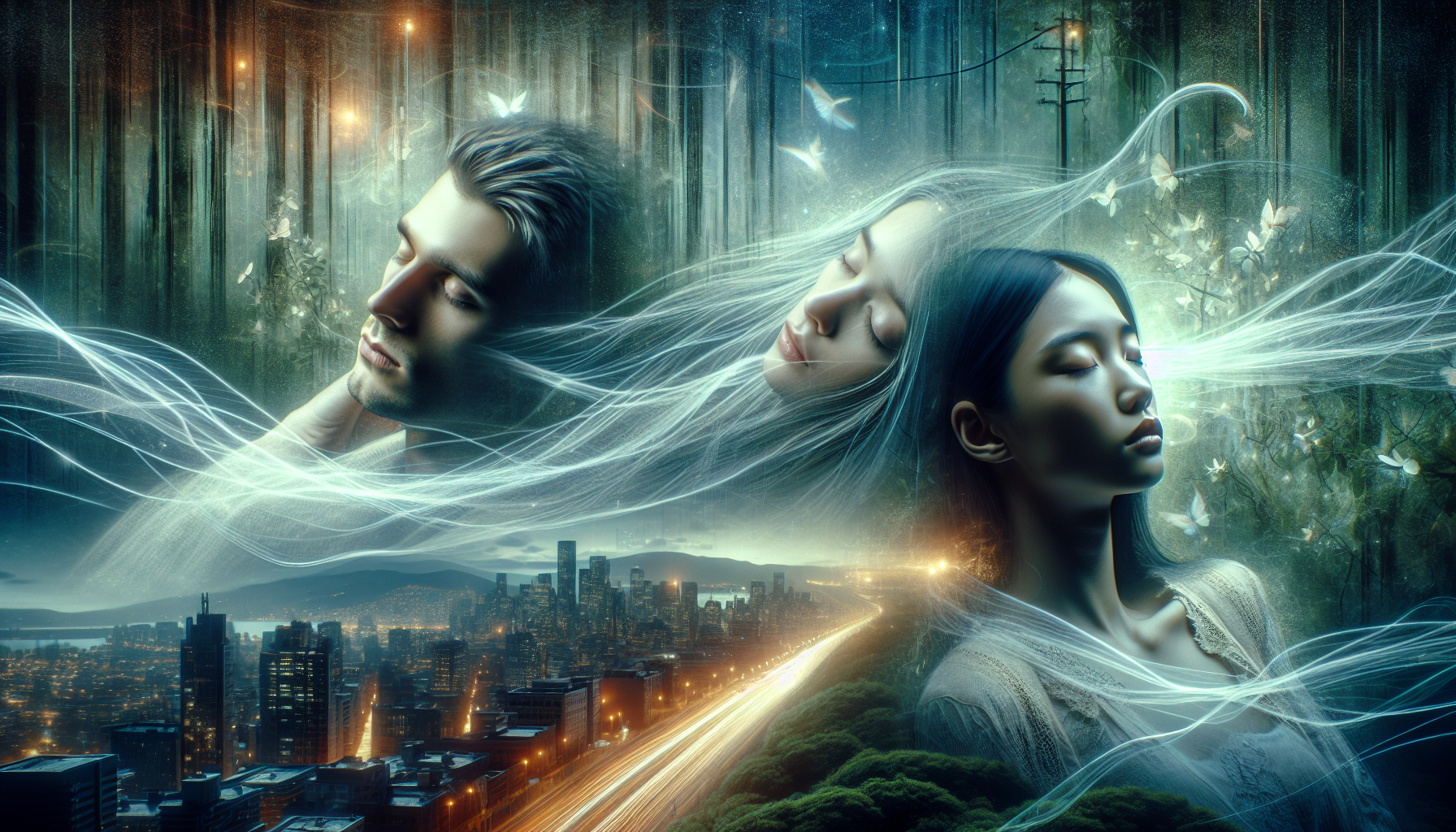
Conclusion
In conclusion, “Dream Connect: Unraveling the Mystery of Shared Dreams – Are They Just Coincidence or Something More?” has delved into the fascinating world of shared dreams, exploring the depths of a phenomenon that has intrigued humanity for centuries. Throughout this exploration, we have navigated through various theories, from psychological explanations to more mystical interpretations, each offering a unique lens through which to view shared dreams.
We began by examining the psychological perspective, which suggests that shared dreams could arise from common experiences or emotional connections between individuals. This theory emphasizes the role of the subconscious mind and collective unconscious, as introduced by Carl Jung, in shaping our dream landscapes. By understanding these psychological underpinnings, we gain insight into how shared dreams might not be mere coincidences, but rather manifestations of our interconnectedness on a mental and emotional level. For further reading on Jung’s theories, you can visit this link.
Moving beyond psychology, the article ventured into the realm of scientific inquiry, where researchers have attempted to unravel the neurological basis of shared dreams. Advances in neuroimaging and sleep studies provide a glimpse into the complex processes that occur in our brains during dreaming. While definitive scientific evidence remains elusive, ongoing research continues to shed light on the mysterious nature of shared dreams. For those interested in exploring recent scientific findings, the Sleep Foundation offers a wealth of resources.
On a more philosophical note, shared dreams invite us to ponder the nature of reality and consciousness itself. Are these experiences merely products of our minds, or do they hint at a deeper, interconnected reality? This question touches on the essence of human existence and encourages us to explore the boundaries between the tangible and the intangible. Such discussions remind us of the awe and wonder that dreams inspire, urging us to remain open to the mysteries of the universe.
Throughout the article, we also explored cultural and historical perspectives on shared dreams. Many cultures have long regarded dreams as windows into the spiritual realm, offering guidance, warnings, or connections to otherworldly entities. These traditions highlight the universal nature of dreams and their significance across different societies. Understanding these cultural contexts enriches our appreciation of shared dreams and encourages us to embrace diverse interpretations.
The potential for shared dreams to strengthen relationships and foster empathy cannot be overstated. When two or more individuals experience a shared dream, it creates a unique bond, transcending the ordinary confines of communication. These dreams can serve as catalysts for deeper understanding and compassion, encouraging us to forge stronger connections with those around us.
As we conclude this exploration, it is essential to recognize the importance of remaining curious and open-minded. Shared dreams offer a tantalizing glimpse into the mysteries of the mind and the universe, inviting us to question, explore, and seek understanding. Whether you approach this topic from a scientific, philosophical, or spiritual perspective, the journey of unraveling the enigma of shared dreams is one of endless possibilities and discoveries.
We encourage you, dear reader, to reflect on your own experiences with shared dreams. Have you ever encountered such phenomena? What are your thoughts on their significance? We invite you to share your stories, insights, and questions in the comments section below. By engaging in this dialogue, we can collectively expand our understanding of shared dreams and their place in our lives.
Moreover, if this article has sparked your interest, consider sharing it with others who might find it intriguing. The more we engage with and discuss these topics, the closer we come to uncovering the truths hidden within our dreamscapes. Let this be a starting point for your own exploration of shared dreams and their potential meanings.
In closing, may the mystery of shared dreams inspire you to delve deeper into the realms of your own subconscious and to forge connections with those who share your journey. As we navigate the complexities of life, let us remain open to the wonders and mysteries that dreams present, for they remind us that there is always more to discover, both within ourselves and in the world around us. 🌌
For those eager to continue their journey into the world of dreams, the International Association for the Study of Dreams is an excellent resource, offering insights and opportunities for further exploration.
Toni Santos is a visual storyteller and dream archivist whose work explores the delicate boundary between memory and imagination. Through layered visuals and symbolic design, Toni captures the fleeting essence of dreams — those strange, beautiful, and sometimes haunting fragments that drift through sleep and linger in waking thought.
His creative journey is rooted in a deep fascination with the subconscious and the imagery it conjures. From half-remembered landscapes to recurring symbols and surreal encounters, each piece Toni brings to life becomes a portal into the inner archive — where time distorts, meanings shift, and personal mythology takes form.
With a background in handcrafted artistry and visual composition, Toni merges intuition with intention. His work doesn’t just depict dreams; it preserves them, translating ephemeral moments into tangible expressions that evoke emotion, curiosity, and quiet revelation. Each visual is both a record and an invitation to explore the rich terrain of inner life.
As the guiding voice behind Vizovex, Toni offers illustrated dream journals, symbolic studies, and visual essays that help others connect with the poetic structure of their own subconscious landscapes. His art becomes a mirror — not just of what we see at night, but of what we carry deep within.
His work is a tribute to:
The fragile beauty of forgotten dreams
The language of symbols in the subconscious mind
The inner worlds we visit but rarely name
Whether you’re a lucid dreamer, a seeker of hidden meanings, or someone fascinated by the mystery of sleep-born stories, Toni welcomes you to step into a space where dreams are not lost — they are archived, one vision, one sketch, one silent narrative at a time.


